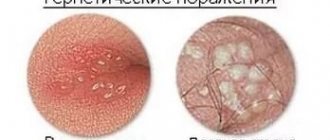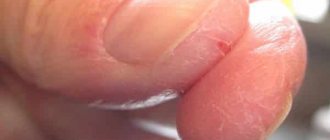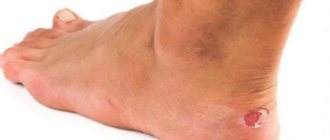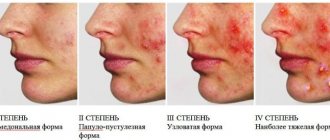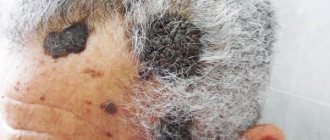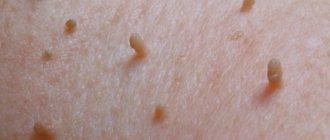Papillomas on the lip are benign formations caused by the presence of HPV in the body, the carriers of which are 90% of the world's inhabitants. In rare cases it can be malignant. The growth causes a lot of difficulties and needs to be removed. To do this, they resort to the help of qualified specialists and folk remedies. The main problem with treatment is the risk of leaving a scar on the face, which is almost impossible to get rid of.
Causes and symptoms of papilloma on the lip
Papillomavirus can live in the surface layer of the skin and mucous membrane of the lips for years, remaining in a latent state. External manifestation in the form of a growth on the lip occurs when the immune system is weakened.
Reasons and factors that cause activation of the virus:
- unbalanced diet;
- diseases of internal organs (disruption of the endocrine system and metabolism, pathologies of the cardiovascular system);
- bad habits;
- stress, nervous experiences;
- regular overheating or hypothermia of the body;
- taking antibiotics and hormonal drugs;
- hormonal disbalance;
- sedentary lifestyle;
- transmission of the virus due to violation of personal hygiene rules (using other people's things, habit of biting nails).
The presence of warts on the lip is often asymptomatic.
In case of injury to formations, the patient is concerned about the following symptoms: itching, pain, swelling, burning. According to the International Classification of Diseases (ICD-10), papillomas that are localized on the lips belong to the section “Other benign neoplasms of the skin,” code D23.0.
Symptoms and diagnosis
The main sign of the disease is a neoplasm on the skin or in the mucous membrane area up to 2 cm in size. When in contact with this “wart”, a person does not feel any pain, except for this, the general state of health does not change.
Often these are single tumors, but in rare cases they can “grow together” and form colonies, which are an association of several papules. In appearance, their surface looks like cauliflower or vaguely resembles herpes. The difference between them is that the balls of the fibroepithelioma structure do not contain liquid and do not burst.
In the mouth area, the growths stand out strongly and are very noticeable; Here's what they look like on the lips, photo:
In the mouth area the growths stand out strongly and are very noticeable
Diagnosis of the disease during the acute period (when its manifestations are noticeable) involves cytological studies for papillomavirus , microscopic examination of the surface of the epidermis is carried out, the degree of tissue damage is studied, and the size of the focus of inflammation is determined.
During the “sleep period” of the pathogen, the above methods are ineffective, therefore, to prevent the first signs, PCR studies and DNA tests are used, which make it possible to determine any type of virus, even in the inactive stage.
How to distinguish from other formations on the lips
Types of papillomas on the lip:
- flat – shaped like a nodule, rising above the surface of the skin;
- vulgar - nodular in shape, distinctive feature - rough surface;
- genital warts are formations shaped like a cockscomb or cauliflower inflorescences.
Papillomas should be distinguished from other formations: moles, calluses, molluscum contagiosum, acne, hemangioma, age spots.
How they differ from other formations:
- nodular or papillary form;
- rough surface;
- clear boundaries;
- the rough shell is easily removed;
- multiplicity, tendency to grow;
- color – from flesh to shades of brown;
The cause of its occurrence should be taken into account: if the formation occurs after stress, illness (decreased immunity), it is a wart or papilloma.
The doctor will determine the exact diagnosis after diagnosis.
Diagnostic research methods
Warts that appear on the lips are mostly benign in nature, but under adverse influences they can degenerate into malignant tumors. Therefore, when these unpleasant problems appear on the delicate skin of the lips, it is better to undergo high-quality diagnostics and establish the type of human papillomavirus in order to exclude the oncogenic factor. The doctor must make sure that the growth is benign. To do this, various methods are used to determine the type of human papillomavirus, its concentration, and sometimes, biomaterial is taken for additional research (in the case when the doctor suspects cancer).
Dermatoscopy is a method that allows examinations at the very initial stages of the disease. Dermatoscopy is actively used in many European countries. The doctor has the opportunity to carefully examine the wart that has just appeared on the lip using a special device (which magnifies the image many times). The positive thing is that it becomes possible, without any surgical excision, to examine the contours and structure of the papilloma. Highly accurate information can also be obtained using digital cameras equipped with computer programs. They make it possible to trace changes in cells over time. But, in the case of a progressive process, when formations change their color, shape, and begin to quickly increase in size, it is appropriate to use other diagnostic methods.
Diagnostics and localization features
Papilloma can be localized on any part of the lips: along the edges, on the red border of the upper and lower lips, on the inner surface.
Need advice from an experienced doctor?
Get a doctor's consultation online. Ask your question right now.
Ask a free question
Diagnostics is required to establish the HPV strain (there are over 100 of them). There are oncogenic, non-oncogenic and moderately oncogenic viruses. Early diagnosis helps prevent the development of a malignant tumor.
To establish a diagnosis, you must contact a medical institution at your place of residence. A visit to a dermatologist is recommended. The doctor conducts an examination and collects anamnesis. The main method for diagnosing warts is examination with a dermatoscope. The device allows you to examine the structure and contours of the papilloma on the lip.
If there is a suspicion of oncogenicity, a biopsy and histology are performed.
Treatment
The growth of tissue in the lip area is not only an aesthetically unpleasant situation, but also potentially dangerous. Injury to the growth can lead to its excessive growth, and there is also a risk of malignancy of the process. For this reason, it is necessary to promptly treat papillomas.
Medications
Treatment requires an integrated approach, so drugs from various groups can be prescribed:
- Immunomodulators (the activation of the virus is based on a decrease in the body’s defense, so first of all it is necessary to restore it). This category includes the drugs “Genferon”, “Immunomax”, “Cycloferon”, etc.
- The use of antiviral agents (Isoprinosine, Interferon, Panavir) to suppress the pathogen (orally or locally). Local exposure involves administration directly to the sites of tissue proliferation.
- Taking vitamin complexes to strengthen the body.
- Prescription of agents for destruction of formation (Solcoderm, Condilin).
- If the process is complicated by a bacterial infection, antibiotic therapy is indicated.
In children, including infants, treatment should be started as quickly as possible. It is difficult to explain to a child that the papilloma cannot be touched; the risk of damage and complications is high.
Folk remedies
As part of the fight against papillomas on the lips, traditional methods are often implemented. This approach can be dangerous, especially if it is associated with the destruction of tumor tissue, so you should resort to it only after consulting a doctor .
The most popular home recipes for removing papillomas are:
- Vinegar or iodine. Roll a small ball out of cotton wool, soak it in one of the liquids and apply it to the formation, securing it on top with a band-aid. By changing this compress several times a day, you can dry out the papilloma.
- Celandine juice. Fresh juice of a poisonous plant is used to treat the growth 2-3 times during the day, cauterizing the tissue. The method allows you to induce necrotic processes in areas affected by the virus. The main thing is to avoid contact with healthy skin or mucous membranes.
- Papilloma on the inside of the lip can be wiped with a cut of fresh garlic or its juice.
How to prevent recurrence of papillomas?
Papillomas that appear as a result of infection with a virus can be removed, but it is impossible to get rid of the virus completely. And even when the growths are removed, there is always a risk that they will appear again. However, if you take certain preventive measures, you can avoid the reappearance of growths on the body.
To do this, you need to: observe the rules of personal hygiene, immediately treat all diseases, eat right, get rid of bad habits, strengthen the immune system, get proper and timely rest and exercise.
Papilloma on the tongue
On the mucous membranes of the mouth, nose, genitals, growths appear less frequently than on other parts of the body. However, when it appears, it can cause great discomfort. White papillomas on the tongue can cause a lot of discomfort when eating and even when talking. There is a possibility that its appearance on the tongue is a consequence of infection during a kiss.
Methods for removing papilloma
Since HPV tends to grow, cause discomfort, and there is a danger of a malignant tumor, it is best to remove the papilloma. However, doing this at home is extremely unsafe; the best solution in this situation is to contact a specialist.
There are several methods for removing papilloma:
- surgical , used quite rarely if there is a suspicion of a tumor and if the size of the growth is large. When surgically removing papilloma, local anesthesia is used, the operation lasts relatively short. But the disadvantage is that when a tumor is removed, a healthy area of skin is also removed, and subsequently scars and cicatrices may remain.
- cryodestructive , involves the use of liquid nitrogen to remove papillomas. Removal of warts using the cryodestructive method can occur both in a medical facility and at home. The method is absolutely painless and leaves no scars. The use of this method if a malignant tumor is suspected is strictly prohibited.
- laser removal involves removing growths by burning it with laser beams for 60 seconds; redness may form around the growth, which will disappear in a few days; the wart itself will disappear within a week. Before the procedure, it is necessary to exclude the possibility of a tumor.
- electrocoagulation , cauterization of growths using electrical discharges, does not provide for age restrictions. Removal of papillomas occurs quite quickly, and damaged skin is restored within a week. However, there are also disadvantages: depending on the sensitivity of the person, the procedure can be quite painful, and if the method is chosen incorrectly, there is a risk of scarring.
- radio wave , getting rid of growths through removal using high-frequency radio wave radiation. The radio wave removal method is absolutely non-contact, so it can be used to remove one or several papillomas. The advantage of non-contact removal is that it can be used to remove tumors in all areas of the body. Currently, the most effective and painless way to remove papillomas.
Types of neoplasms
Among the neoplasms that appear on the lips, the most common are :
- flat warts, almost indistinguishable from skin color , up to 5 mm in size. slightly protruding above the surface, without wrinkles characteristic of surrounding tissues;
- common warts resembling with a nodular seal of yellow color, the size of which can be up to 1 cm;
- growths of flesh-colored condylomas, pointed , soft, similar to scallops, their accumulations often spread throughout the mucous membranes, sizes from 3 to 7 mm;
- The lips can also be affected by a filamentous wart : a long, thin flesh-colored formation can easily be damaged by careless movement, which contributes to the further growth of the wart and the appearance of new ones;
- A hanging wart , a dense brown neoplasm whose base resembles a stalk, can reach large sizes
These and some other warts grow, deform the lips, and cause both physical and psychological suffering.
When should you see a doctor? Having noticed a neoplasm, you should immediately contact a doctor .
Many beauty salons provide wart removal services , but not a single professional will do this if a wart has grown on the lip. The risk of causing irreparable harm is too great, because very often squamous cell carcinoma manifests itself in this way, “growing” in the jaw bone, which is easily spread throughout the body by blood, giving rise to new lesions.
Condylomas and papillomas react aggressively to any external influences , starting to grow, degenerating into malignant, cancerous tumors of the lips and mucous membranes.
Examination, dermatoscopy and tissue biopsy are mandatory to exclude any types of cancer . The first doctor you need to contact is a dermatologist who specializes in the treatment of skin diseases. If there are suspicious symptoms, he will refer the patient for all the necessary tests, as well as to an oncologist. Only after excluding oncology can we talk about treating warts on the face.



